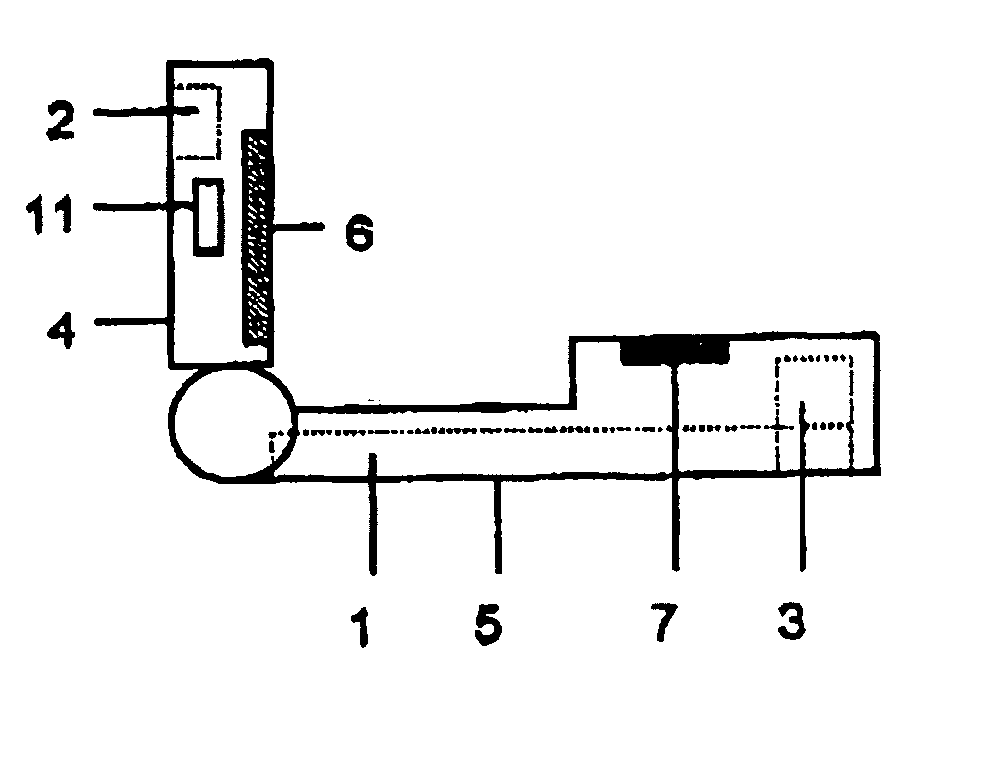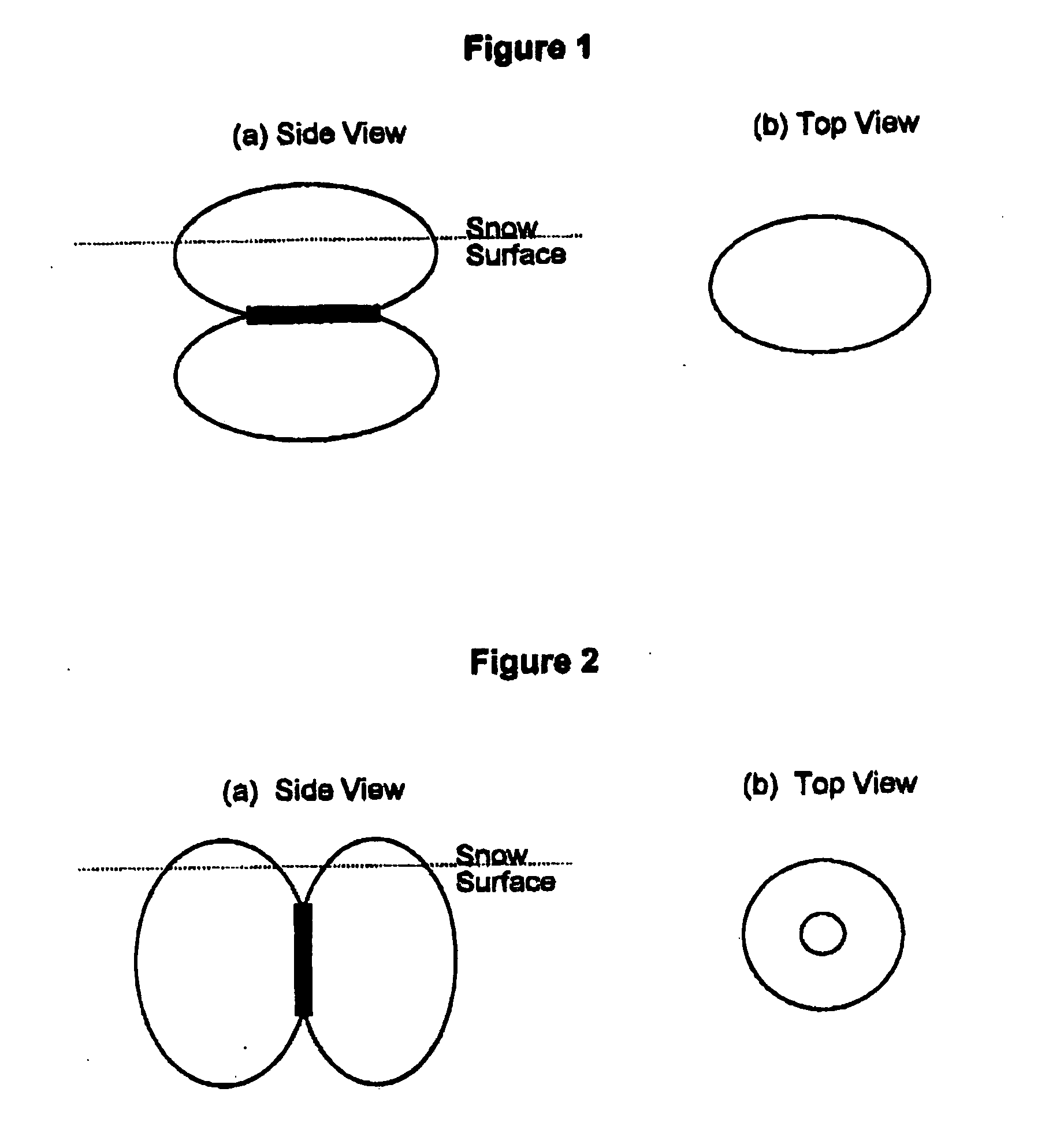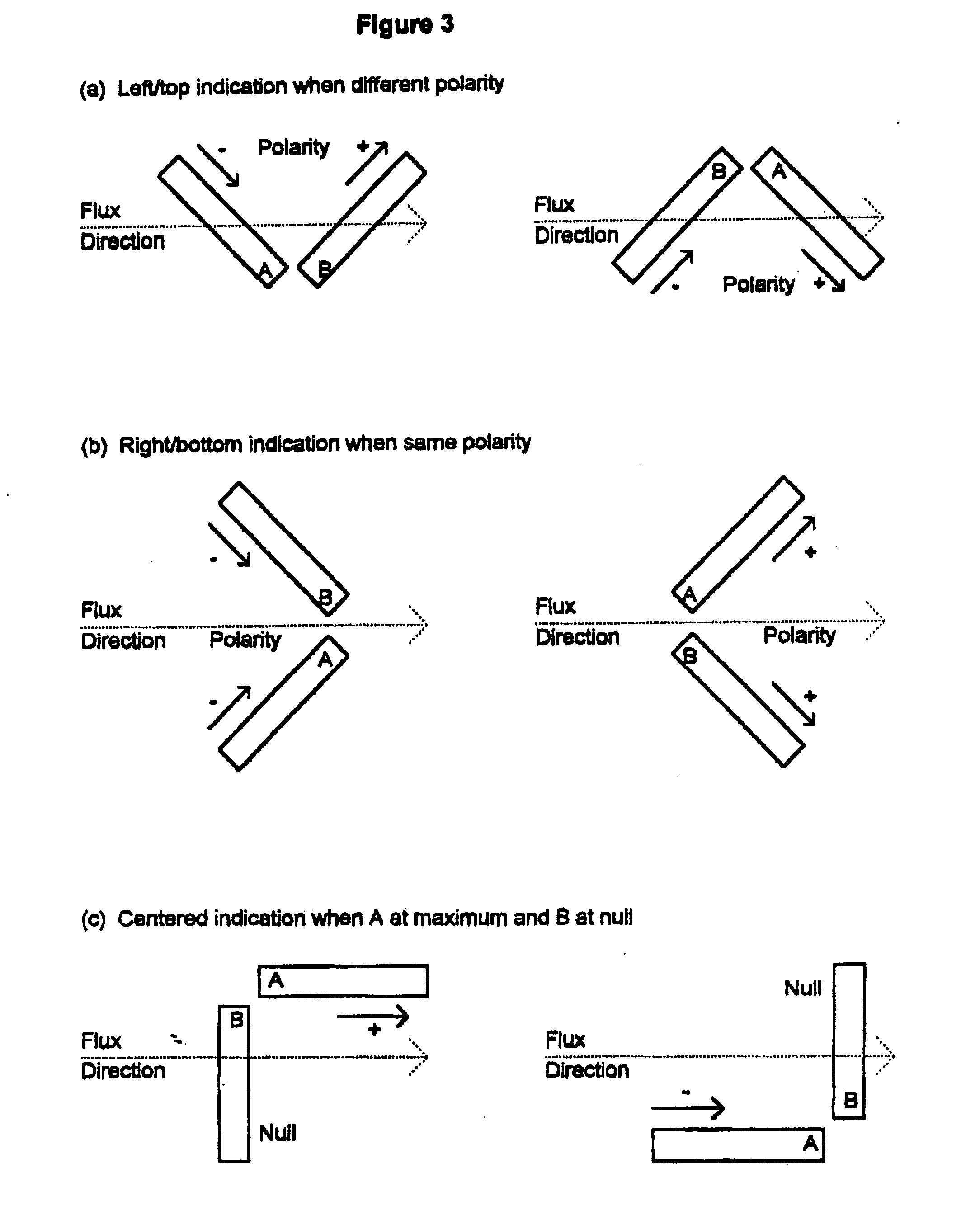Avalanche transceiver
- Summary
- Abstract
- Description
- Claims
- Application Information
AI Technical Summary
Benefits of technology
Problems solved by technology
Method used
Image
Examples
Embodiment Construction
)
[0043] As illustrated in FIG. 4 and FIG. 5, the present invention comprises a receiver with three mutually orthogonal receiving antennas 1, 2 and 3. Antenna 1 is oriented in the forward / backward direction of the housing. Antenna 2 is oriented in the left / right direction while antenna 3 is oriented in the up / down direction. In the preferred embodiment, the antennas are tuned-coil antennas receiving signals at 457 kHz. In another embodiment, the antennas are tuned to receive at 398 kHz for snowmobilers.
[0044] In the present invention, antenna 1 is the largest antenna. Antennas 2 and 3 are smaller in size and are located away from antenna 1. By spatially isolating antennas 2 and 3 away from antenna 1, each antenna has a higher sensitivity and, consequently, a higher range of operation. FIG. 4 and FIG. 5 show antenna 2 located in the flip lid 4 while antennas 1 and 3 are located in the main housing 5. While this is the preferred embodiment, other embodiments with different antenna loc...
PUM
 Login to View More
Login to View More Abstract
Description
Claims
Application Information
 Login to View More
Login to View More - R&D
- Intellectual Property
- Life Sciences
- Materials
- Tech Scout
- Unparalleled Data Quality
- Higher Quality Content
- 60% Fewer Hallucinations
Browse by: Latest US Patents, China's latest patents, Technical Efficacy Thesaurus, Application Domain, Technology Topic, Popular Technical Reports.
© 2025 PatSnap. All rights reserved.Legal|Privacy policy|Modern Slavery Act Transparency Statement|Sitemap|About US| Contact US: help@patsnap.com



